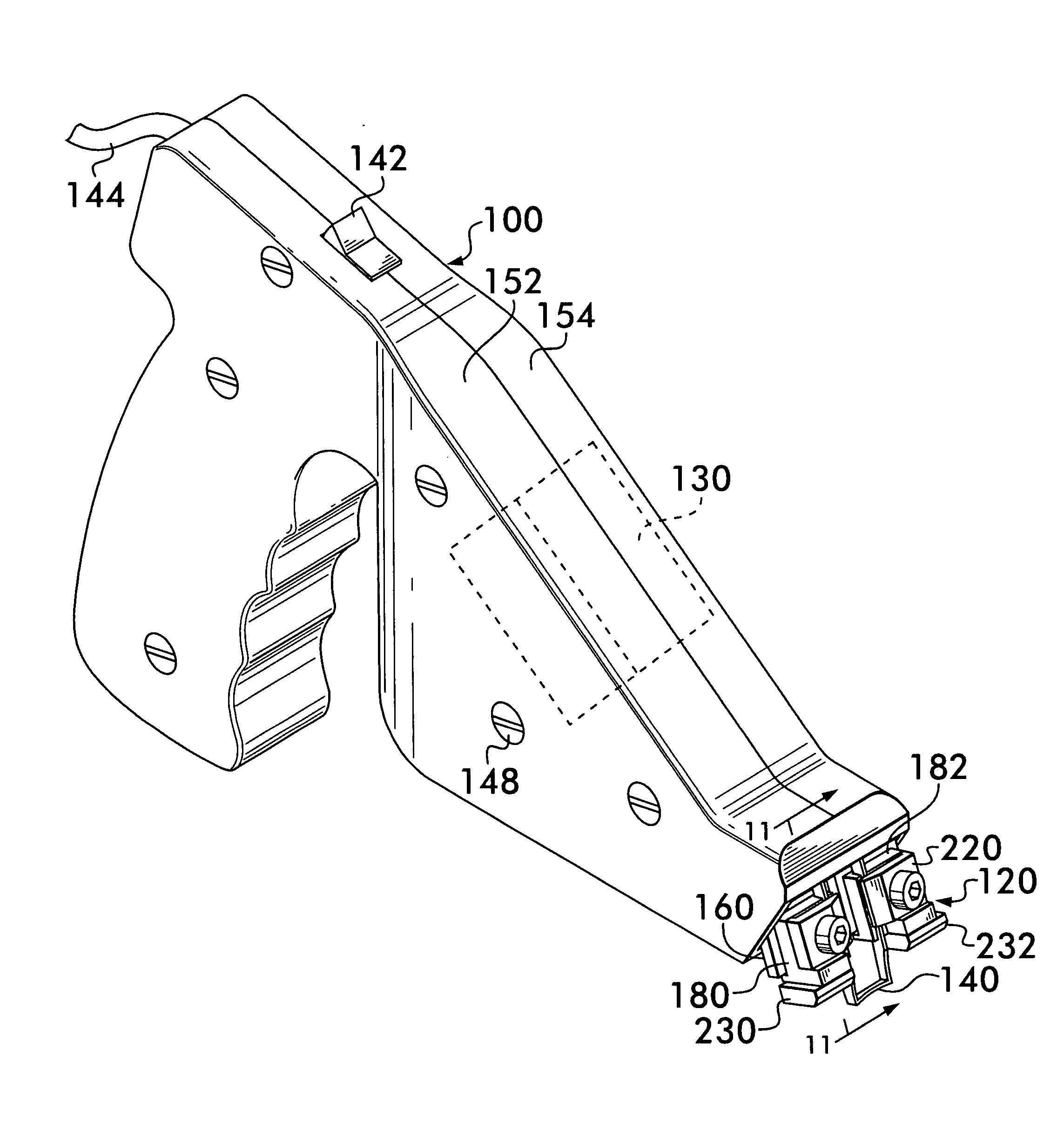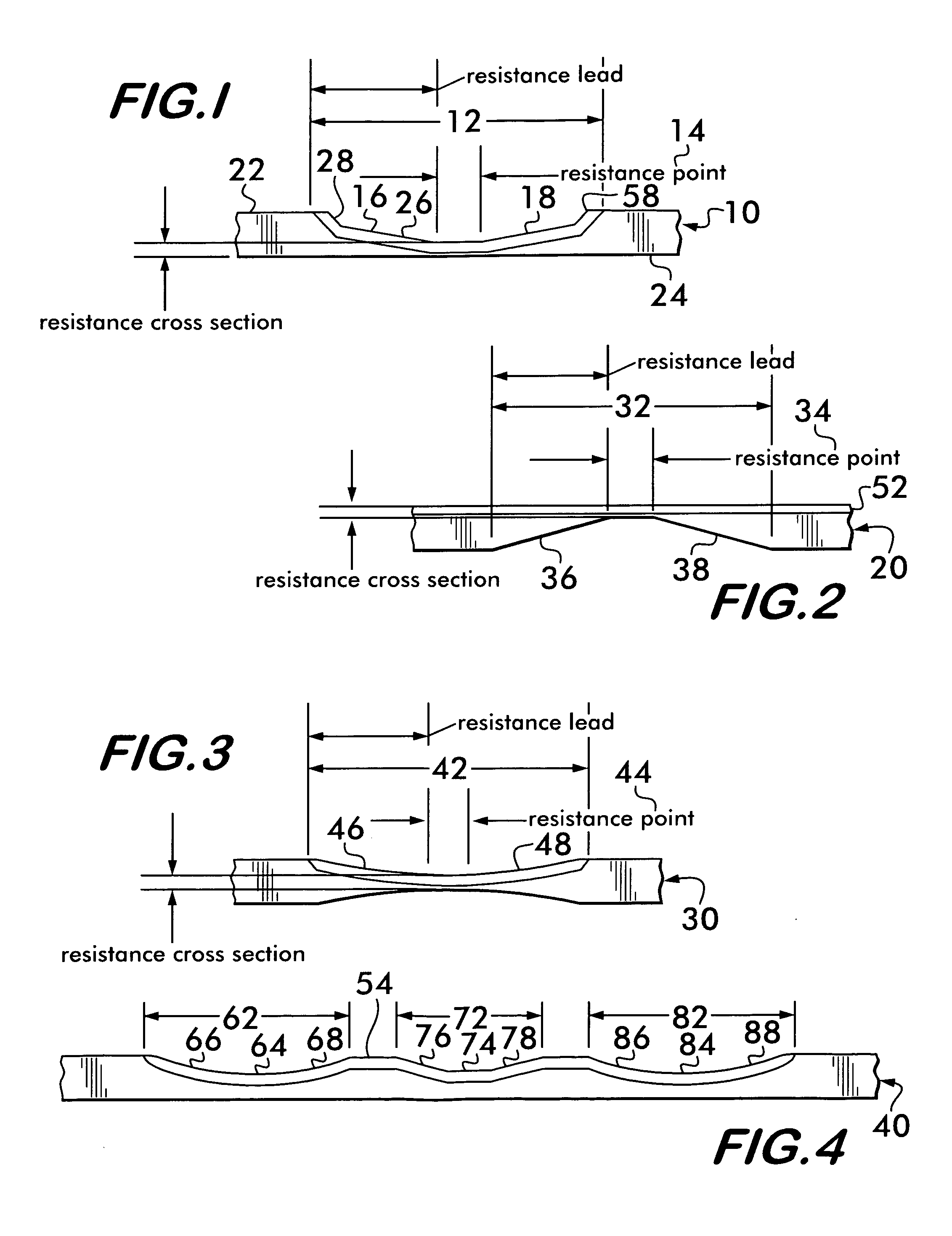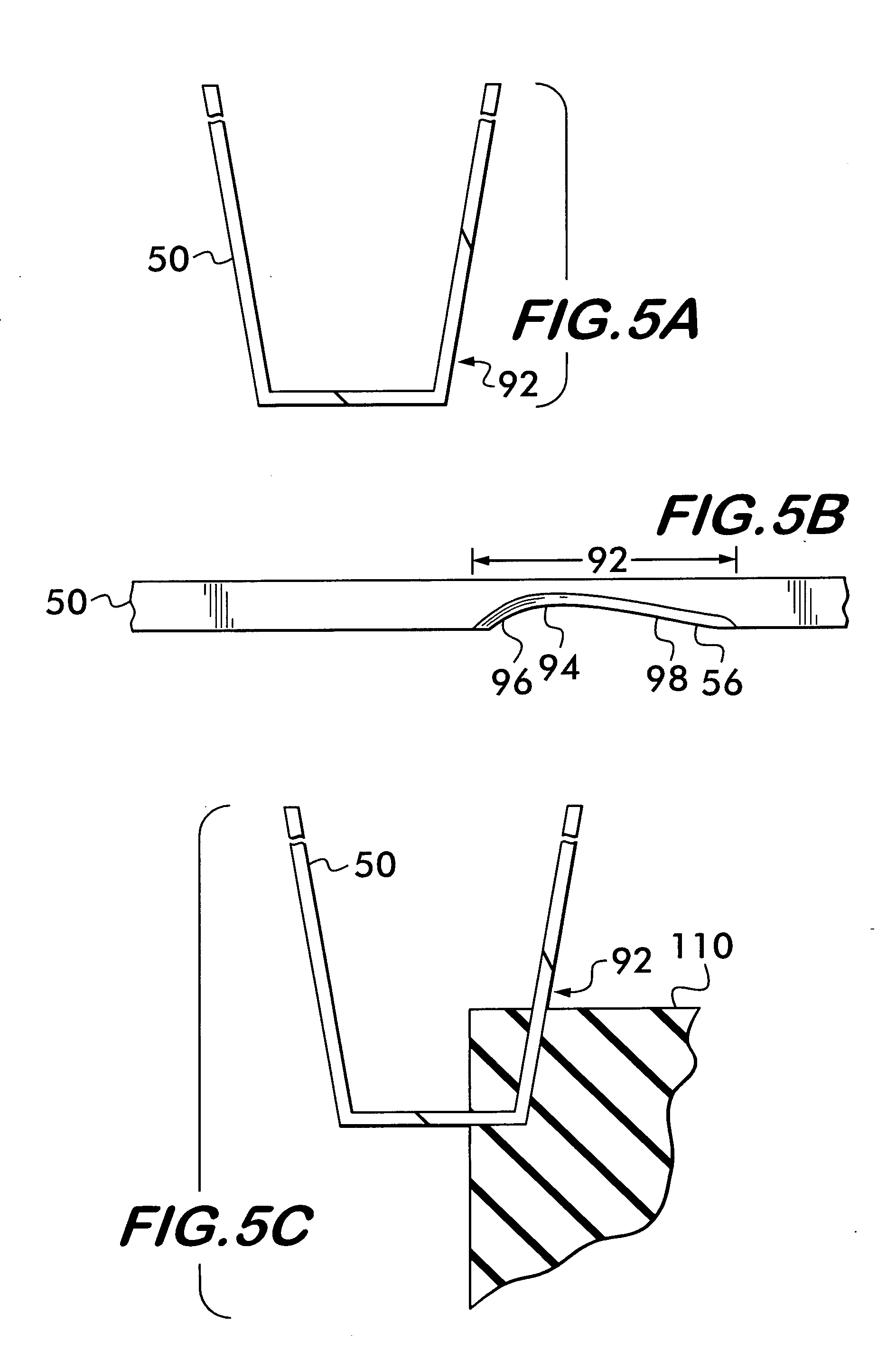Heated cutting blade, cutting head, and blade mounting structure requiring less current and providing improved cutting and method
a technology of cutting blades and mounting structures, which is applied in the direction of manufacturing tools, portable power-driven tools, other domestic objects, etc., can solve the problems of power supply and transformer, significant heating is not provided where it is needed, and the resistance of blades heated by electricity passing through the resistance of blades has encountered substantial difficulties, so as to increase the electrical resistance and heating of the blade section, reduce the cross-sectional area of the blade, and fast and easy mounting resistance
- Summary
- Abstract
- Description
- Claims
- Application Information
AI Technical Summary
Benefits of technology
Problems solved by technology
Method used
Image
Examples
Embodiment Construction
[0045]Referring now to the drawings, wherein like numerals indicate like elements, there is shown in FIG. 1 a blade 10 in accordance with the present invention for cutting heat sensitive materials, such as rubber, plastic or other heat sensitive materials, which requires a smaller current to heat the resistance point to a predetermined temperature suitable for cutting the heat sensitive material. Blade 10 is shaped to substantially reduce the cross sectional area of the blade in a section 12 extending as illustrated in FIG. 1 and including resistance point 14 and resistance lead taper sections 16 and 18. Section 12 has a substantially reduced cross sectional area as compared to the end portions of the blade, such as first end 22 and second end 24. “End or end portion of the blade” does not necessarily mean the very end of the blade, but portions of the blade where the cross sectional area is not reduced, not sharpened and is used for attachment to the mounting structure of a cutting...
PUM
| Property | Measurement | Unit |
|---|---|---|
| current | aaaaa | aaaaa |
| area | aaaaa | aaaaa |
| voltage | aaaaa | aaaaa |
Abstract
Description
Claims
Application Information
 Login to View More
Login to View More - R&D
- Intellectual Property
- Life Sciences
- Materials
- Tech Scout
- Unparalleled Data Quality
- Higher Quality Content
- 60% Fewer Hallucinations
Browse by: Latest US Patents, China's latest patents, Technical Efficacy Thesaurus, Application Domain, Technology Topic, Popular Technical Reports.
© 2025 PatSnap. All rights reserved.Legal|Privacy policy|Modern Slavery Act Transparency Statement|Sitemap|About US| Contact US: help@patsnap.com



